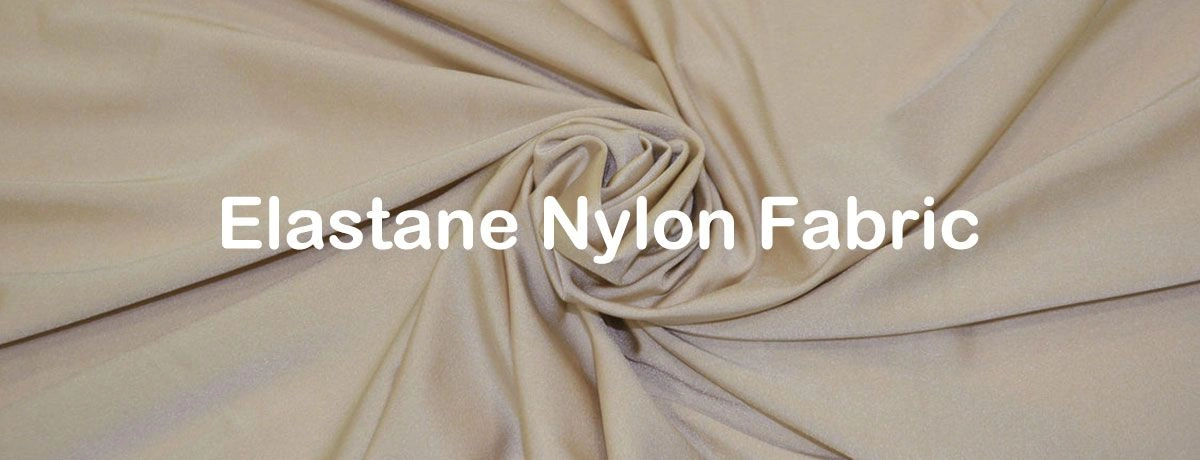Elastane Nylon Fabric Guide

Introduction
Nylon spandex has become a fabric staple in the industry, from activewear to high end fashion. This fabric is durable, stretchy and comfortable, that’s why manufacturers and brands around the world love it.
If you’re a fabric wholesaler, importer or buyer looking to get to know more about nylon spandex, this guide will take you through its features, benefits and common uses. We’ll also compare nylon spandex to polyester spandex so you can make better buying decisions.
You’ll learn:
-
What is nylon and spandex fabric
-
Pros and cons
-
Material composition and uses for manufacturers
-
How stretchy can nylon spandex blends be
By the end of this post you’ll know if nylon spandex is right for your next project.
What is Nylon Spandex Fabric?
Nylon spandex fabric is a blend of two fibers—nylon and spandex. Each fiber brings its own properties:
-
Nylon is a synthetic fiber known for its strength, lightweight, quick dry and wear and tear resistance.
-
Spandex is also known as elastane or Lycra is famous for its high stretch and elasticity, super flexible and comfortable.
When combined these fibers create a stretch fabric that is strong, stretchy and moisture resistant, perfect for activewear, swimsuits, lingerie and compression wear. Stretch nylon fabric comes in various compositions—for example 92% nylon and 8% spandex—which determines its use.
Pros and Cons of Nylon Spandex Fabric
Before you choose nylon and spandex for your clothing lines or other textile uses, you need to consider its advantages and disadvantages.
Pros of Nylon Spandex Fabric:
-
Durable: Nylon spandex is strong and durable. It can take a lot of wear and tear, perfect for activewear and swimwear.
-
Flexible: The fabric has great stretch and recovery, comfortable fit and movement. That’s why it’s popular for sportswear and dancewear.
-
Lightweight: Nylon spandex is lightweight, adds to the comfort of the wearer. It doesn’t weigh you down, perfect for athletic activities.
-
Quick Dry: One of the best features of nylon spandex is its quick dry. This fabric dries faster than polyester spandex, for comfort and practicality especially after swimming. That’s why it’s a favorite for competitive swimwear.
-
Moisture Wicking: Nylon spandex has excellent moisture wicking properties, means it can draw sweat away from the body, keeping the wearer dry and comfortable.
-
Mildew and Mold Resistant: The fabric is mildew and mold resistant, a big plus for swimwear and other garments that are exposed to moisture.
Cons of Nylon Spandex Fabric:
-
Cost: Nylon spandex is more expensive than other fabrics. If you’re on a tight budget, this might be a consideration.
-
Heat Sensitive: The fabric is heat sensitive. It can melt or damage if exposed to high heat, so it needs to be handled carefully during washing and drying.
-
Environmental Impact: Nylon spandex is not biodegradable, that’s a concern for the environment. But there are efforts to develop more eco friendly alternatives.
Material Composition
The ratio of nylon to spandex in the fabric composition is key. Different blends balance stretch, durability and support for different applications. And this fabric can withstand various cosmetic products and natural oils, so it’s a great choice for active lifestyle.
Nylon-Spandex Ratios and Their Uses
-
92% Nylon, 8% Spandex: Moderate stretch with good support, used for swimsuits, bras and compression wear. Fabric can withstand cosmetic products and natural oils, perfect for activewear and everyday use.
-
80% Nylon, 20% Spandex: More stretch and flexibility, used for leggings and yoga pants.
-
70% Nylon, 30% Spandex: Maximum stretch, used for high performance sportswear and shapewear.
The higher the spandex content, the stretchier the fabric will be. For durability and support heavy applications, blends with lower spandex percentage is preferred.
Is 92% Nylon and 8% Spandex Stretchy?
Yes! A 92% nylon and 8% spandex fabric is stretchy enough for everyday and performance use. This ratio gives a good balance of stretch without compromising the fabric’s structure and strength. Garments will retain their shape over time even after multiple use and washing.
This composition is often used for garments that requires both stretch and durability like sports bra, swimsuits and activewear tops. And also for creating snug yet comfortable dresses that gives mobility and shape.
Conclusion
Nylon spandex fabric is a winner in textiles, offering versatility, comfort and performance for today’s fashion and activewear market. By choosing the right fabric composition, wholesalers and apparel manufacturers can serve different customer needs with stylish options that combines functionality and style.
If you’re sourcing elastane nylon fabric or trying this material for the first time, remember:
-
Nylon and spandex material has unmatched durability and stretch.
-
Blend ratio is key to how the fabric will perform in final application.
-
While nylon blends are more expensive than polyester, the premium quality is worth it.
Whether you’re designing athletic wear or compression garments, nylon spandex blends has flexibility and performance. Try stretch nylon fabrics now!
